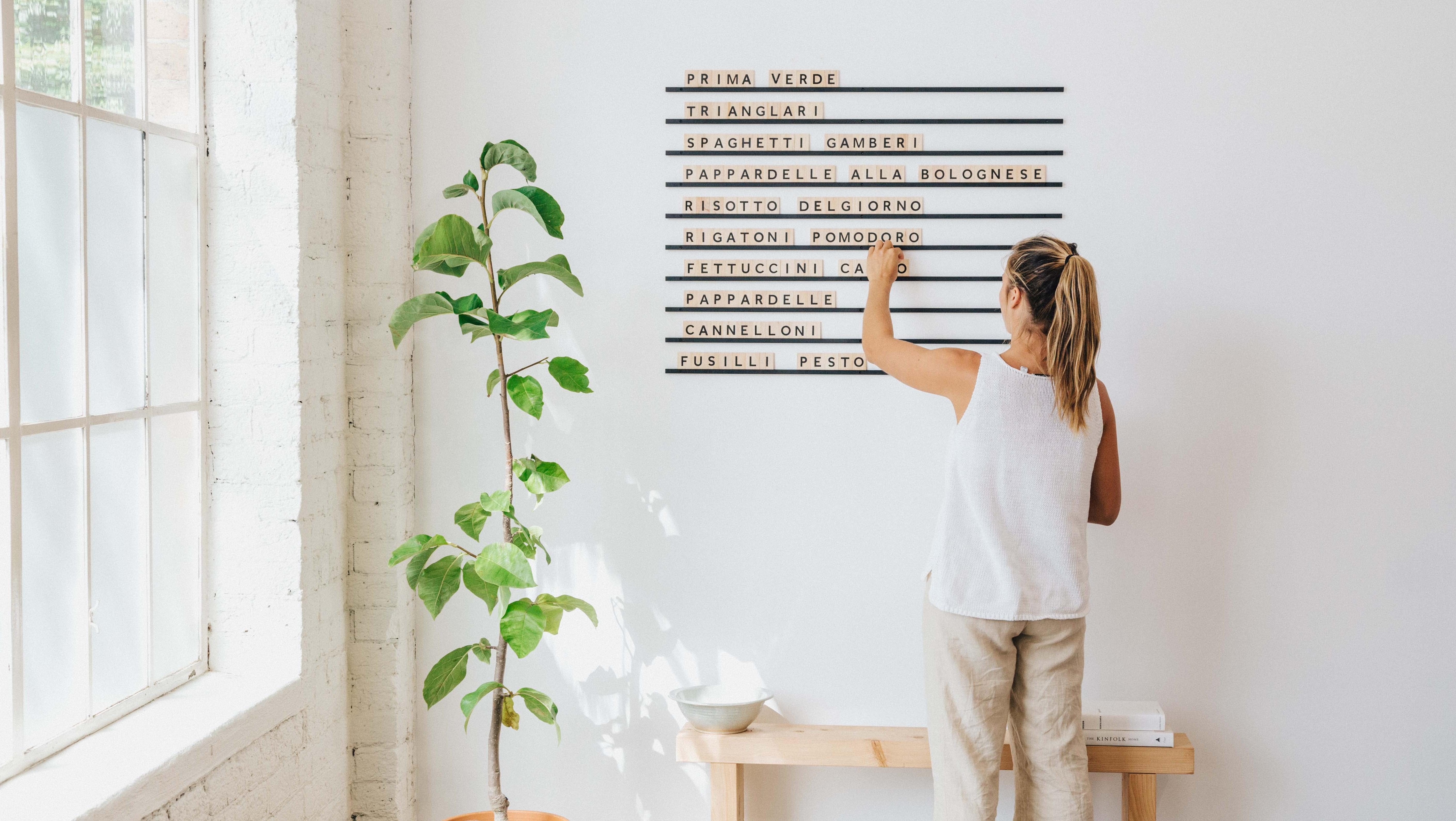Why This Menu Board Is Popping Up In Cafes Everywhere
That cool, industrial look owes its popularity, in part, to Pinterest (of course).
When Homes Brewery opened a coffee bar last winter in Ann Arbor, Michigan, I was waiting in line to order one of its house-made doughnuts when the sleek, minimalist aesthetic of its menu board caught my eye. It featured all capital letters arranged on a thin little railing, sort of like those photo display systems and floating ledges found at the likes of West Elm and CB2.
This summer, when the new izakaya Bar Sukeban opened for business in New Orleans, I slid into a seat and saw the same oh-so-cool typeface on the wall. And just earlier this month, White Whale Bookstore in Pittsburgh posted a picture of the menu board at its new brewpub, the blocky DIY-looking lettering on prominent display.

I reached out to White Whale to ask what was up on the wall. The shop sourced its menu board from a company called George and Willy, based in New Zealand. All these cafes, and more, have bought versions of the George and Willy changeable menu boards, which come in a variety of sizes and styles.
"George and Willy" are George Wilkins and Will McCallum, two Kiwis who met in college about a decade ago. McCallum told me by phone that they each were obsessed with making things—desks, lamps, tables—and decided to go into business together. But as soon as they created the sign for their company, they were taken aback by the reaction.
"Everybody was like, 'oh, I love your sign,'" McCallum says. "We worked out that there was a niche. Nobody was making cool signs." Their first effort was a sandwich board A-frame sign with rows of changeable letters that could sit out in front of a shop, letting customers know the hours or specials inside.
The wall-mounted menu boards followed from their own experience with New Zealand's cafe culture. They saw a need for something to replace ubiquitous blackboards, which weren't always the easiest to read.
"We definitely spend a lot of time in coffee shops, and we basically ended up making a range of products to help cafes look cool and tidy, without messy handwriting," McCallum says.
The George and Willy product line aims for a look that's "minimalist, but still thought about," McCallum says. He thinks the streamlined look has a timeless quality while still being functional. "They're something that would have fit in 50 years ago, and will still look good 50 years from now."
For business owners, the changeable signs offer flexibility at a time when supply chain hiccups and staffing shortages make lineups hard to guarantee. They're also a boost to places that want to change their menus according to the seasons, or reflect the introduction of new brews or coffee variations.
So, how did George and Willy's product make the leap across the Pacific to the United States? In a word, Pinterest. The company started publishing examples of its work to the photo-sharing site, which has become a popular resource for people designing small businesses.
"When you're setting up a cafe, the first thing you're going to do is go on Pinterest and have a look and see what your space is going to look like," McCallum says. The photos attracted attention, and subsequently drew so many orders that the US is now the company's top market. (McCallum declined to say how many sets had been sold.)
The average sign order is around $400—not cheap, but also "not too bad" compared with custom-made signs, McCallum says. With warehouses in Arizona and South Carolina, signs ordered by US customers can arrive quickly. "We're from New Zealand, but they're not coming from New Zealand," he says.
Given the George and Willy motto, "Better ways to display," McCallum says the company is constantly looking to add new products. One that he hopes will catch is a lighted LED sign board that can be used outside in the evening. And a growing number of cafes are embracing round signs, hung from the building entrance, that can be seen by customers in several directions.
And, after years of neutrals, like black, gray, beige, silver, and white, McCallum thinks cafe customers are ready for something lively. Keep an eye out, he says, for much more color.
